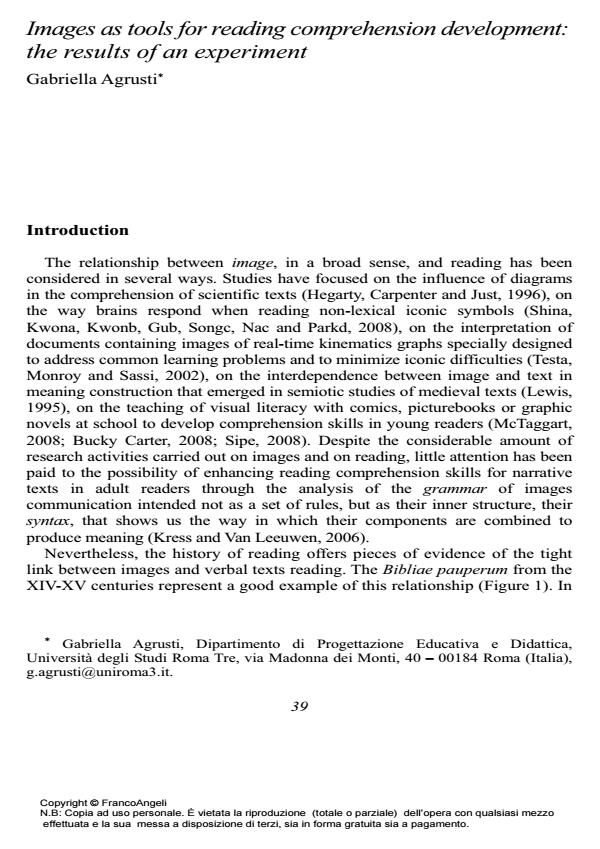Images as tools for reading comprehension development: the results of an experiment
Titolo Rivista CADMO
Autori/Curatori Gabriella Agrusti
Anno di pubblicazione 2010 Fascicolo 2010/2
Lingua Inglese Numero pagine 18 P. 39-56 Dimensione file 1125 KB
DOI 10.3280/CAD2010-002005
Il DOI è il codice a barre della proprietà intellettuale: per saperne di più
clicca qui
Qui sotto puoi vedere in anteprima la prima pagina di questo articolo.
Se questo articolo ti interessa, lo puoi acquistare (e scaricare in formato pdf) seguendo le facili indicazioni per acquistare il download credit. Acquista Download Credits per scaricare questo Articolo in formato PDF

FrancoAngeli è membro della Publishers International Linking Association, Inc (PILA)associazione indipendente e non profit per facilitare (attraverso i servizi tecnologici implementati da CrossRef.org) l’accesso degli studiosi ai contenuti digitali nelle pubblicazioni professionali e scientifiche
Gabriella Agrusti It is widely recognized that prior knowledge plays a fundamental role in reading comprehension and in meaning construction. Generally, readers who are able to identify the typical structure of a text in a genre or to locate its content within the appropriate domain are said to better recall the ideas conveyed by the text. The text itself is a textus, a complex texture that includes rhetorical patterns on different directories (spatial, temporal, figurative), a network structure that offers several ways of integrating information based on relationships among its components. Poor readers are unlikely to make inferences to link these pieces of information into a coherent representation. Would the introduction of an image comprehension strategy improve students’ reading comprehension of verbal texts? In this article the results of a research project carried out in Italy on adult readers, with particular reference to inferential processes in narrative anachronies, will be presented.
Parole chiave:Reading comprehension, images, undergraduate students, assessment, narrative texts
Gabriella Agrusti, Images as tools for reading comprehension development: the results of an experiment in "CADMO" 2/2010, pp 39-56, DOI: 10.3280/CAD2010-002005